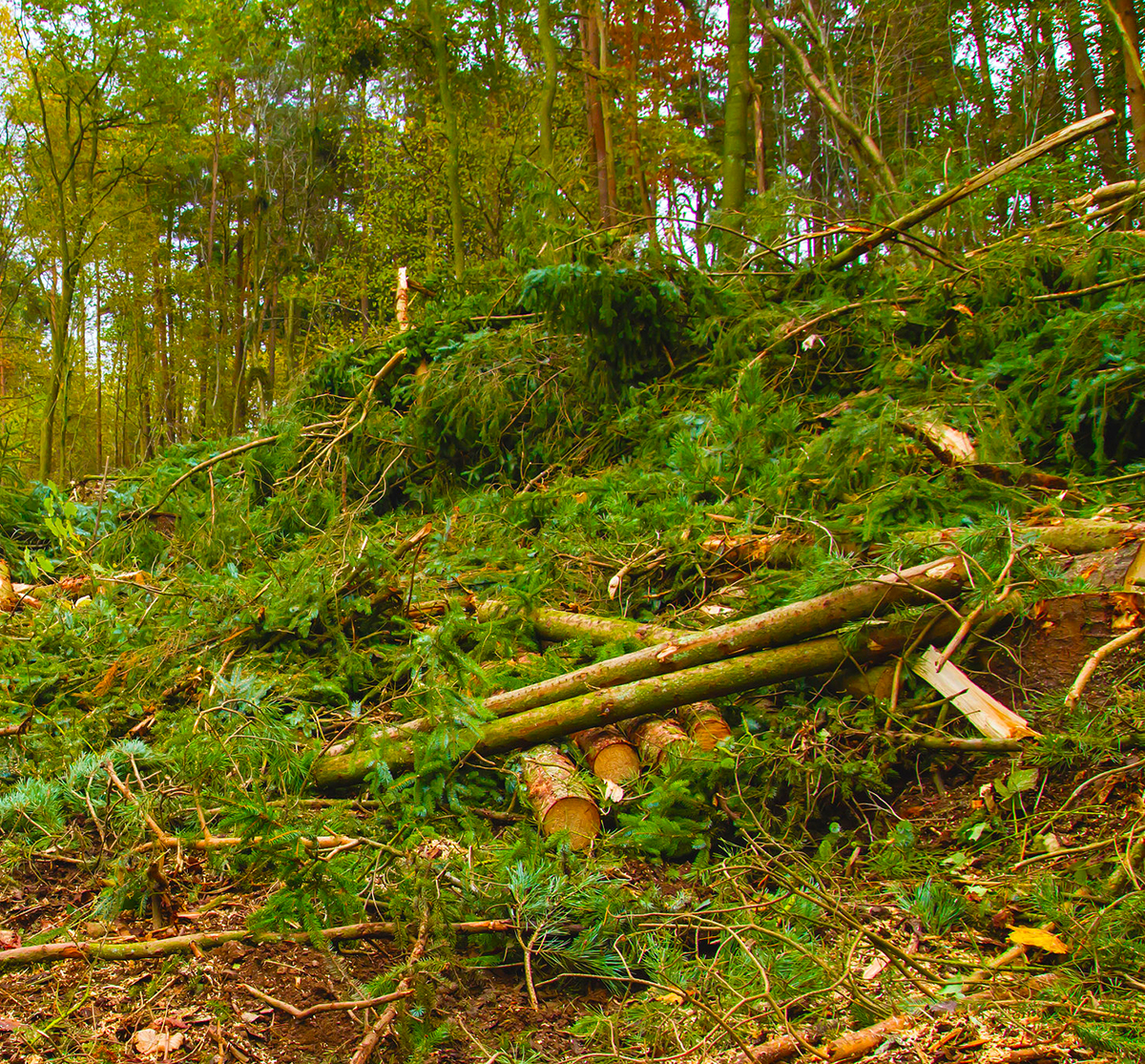Wood Waste Feedstock
Each advanced biorefinery will utilize almost one million green tons of woody biomass annually, which is roughly the amount used at a small to medium sized sawmill. We work with forestry experts to conduct thorough feedstock studies to ensure that our advanced biorefineries have a super redundancy of feedstock necessary to support renewable fuel production for at least 20 years, and preferably 30. We additionally verify that there’s enough available wood waste to allow us to double the capacity of each biorefinery.
The wood waste feedstock is required to meet verified certification requirements for the Renewable Fuel Standard, in order to qualify for RINs (federal credits i.e. Renewable Identification Number), which are sold as carbon offsets to obligated parties. Obligated parties include energy companies that sell fuels that create carbon pollution. In order to reach the lowest possible negative carbon intensity (CI) score, which increases the value of our low carbon fuel standard credits (LCFS), we strive to obtain our biomass from within a 75 mile radius. Every bit of carbon emitted, or saved from emission by our activities, counts towards the overall carbon intensity score of our fuel. The lower the better!
The biomass we convert to fuels comes from thinning of southern yellow pine plantations and natural pine forests that are purpose grown to support commercial lumber operations including sawmills and paper products. The trees are planted, and as they mature, the small, low-vigor trees, sometimes called pulpwood, require removal from actively managed forests to allow healthy and larger trees to thrive.
This silvicultural procedure is centuries old and remains a forestry best practice endorsed by states, national governments, as well as the UN FAO, mainstream NGOs, and others.
Sustainable yield is an important component of sustainable forest management. In the context of forestry, sustainable yield is the largest amount of harvest activity that can occur without degrading the productivity of the stock.
Old growth forests are protected and may not be used for our purposes, and we aren’t permitted to use trees that are clear cut, either. We are strongly in favor of these rules and support the protection of old growth forests.

Forest Management
Forest management creates healthy forests, whether for harvest, restoration, or fire hazard reduction goals. This produces large quantities of ‘waste’ material suitable for biomass fuel production. Healthy forests significantly reduce the occurrence of severe wildfire and lower wildfire suppression costs. Currently, we are not allowed to use materials from state or federal lands, even though the removal of this woody debris would substantially reduce the risk of forest fires.
There’s a unique set of benefits offered by converting forest waste into renewable fuel while simultaneously decreasing catastrophic wildfires, improving forest health, reducing air pollution from wildfires and pile burning, producing jobs in rural communities, and providing an array of other cost‐effective public benefits.
Many of the benefits to society relate to the protection of air, water and land resources and do not have economic values ascribed to them. Renewable fuel production from forest residues has the potential to offset the costs of woody biomass collection and transport and help pay for the public benefits accrued.
Forest Residuals
Harvest residue generated from logging operations, if managed properly, can be an important resource for landowners. Generally referred to as woody biomass, this material typically includes limbs, tops, bark, and unutilized trees.
Harvest residue is highly desirable to us. It’s RFS2 certified for use in the production of renewable and sustainable fuels. This is primarily due to the fact that woody biomass is a renewable feedstock produced from currently unused or underutilized material.
If it’s not used to create fuel, it decomposes, or is burned in a slash pile, releasing CO2 into the atmosphere.
Thus, effectively managing harvest residue is part of sustainable forest management.

Follow
Address
7440 E Pinnacle Peak Rd.
Suite 140
Scottsdale, AZ 85255
Contact
We are not accepting vendor or supplier inquiries or resumes at this time.
Follow our social media channels where we'll announce requests for bids or applications.
